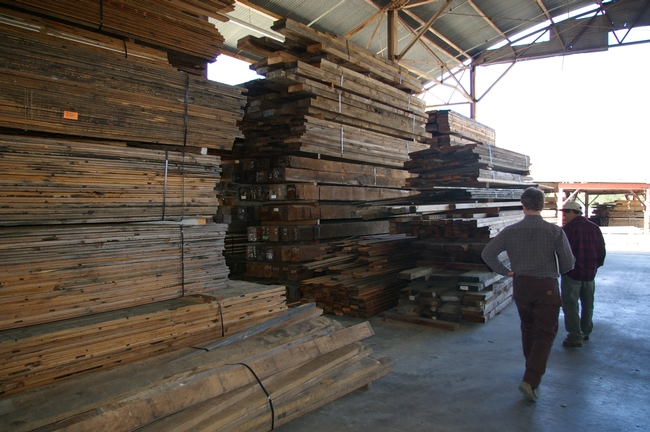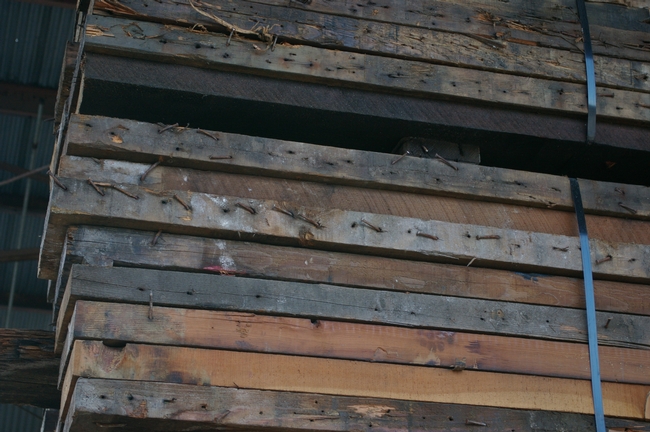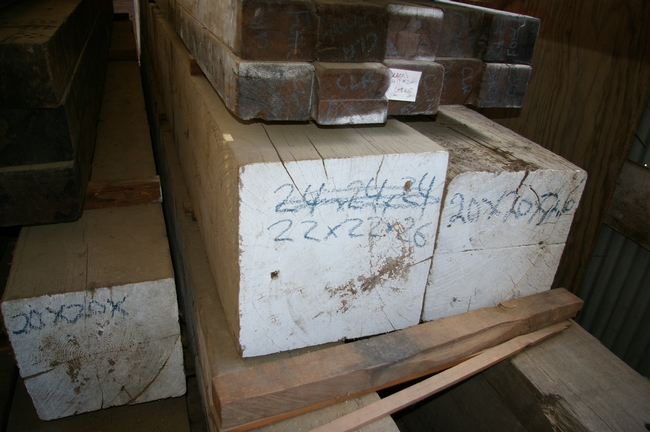Last week I was with Tad Mason of TSS Consultants at the old sawmill site in North Fork, near to the geographic center of California. We were investigating options for the processing of woody biomass from local forests on the site.
We were fortunate enough to meet with Marc Mandel of Crossroads Recycled Lumber which is a reclaimed lumber business located on part of the site. The primary source of wood is building deconstruction projects in California and other locations across the US. It was interesting to see the inventory of material and to see the amount of work that is needed to “reclaim” the wood. Nails are a big problem and need to be pulled out with hand tools. A metal detector is used to assist in this process as any residual metal would severely damage saw blades and other milling equipment.

Advantages of Reclaimed Timber
- It is green – re-using material that would otherwise be wasted
- Most of the wood originally came from old growth trees meaning that is has tight grain and few knots
- The wood is very dimensionally stable because it has been in place for many years – this means warp, cupping, checking or other undesirable movements are unlikely
- The weathered effect of old wood is desirable to some projects (eg barn siding or renovations of historic buildings)

Typically, lumber is processed to order and I now understand why it costs three times as much as regular lumber – it requires a lot of labor and the product is highly desirable. Markets for the reclaimed lumber are national and I was intrigued to hear that some has been used in the new Li Ka Shing Center for Biomedical and Health Sciences building at UC Berkeley. The Crossroads Recycled Lumber website has pictures and information for projects that lumber has been supplied to.
It was great to see a thriving specialized business in a small rural community. The challenge for us is to identify opportunities that could add value to woody biomass that would either complement or integrate with the exiting business. We are currently working on a matrix of value-added woody biomass uses that will help rural communities in their decision making processes. Watch this space for more information soon.
